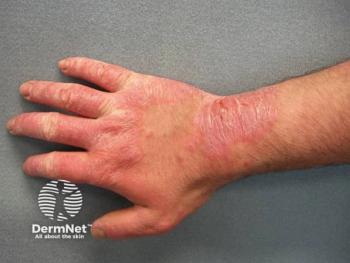
How Dermatology is Revolutionizing Cancer Care, According to Anisha Patel, MD
Key Takeaways
- Dermatology is vital in cancer care, with skin manifestations indicating internal malignancies, including paraneoplastic syndromes, genodermatoses, and cutaneous metastases.
- Advancements in cancer immunotherapy, such as immune checkpoint inhibitors and therapeutic cancer vaccines, are transforming dermatologic cancer treatment.
Anisha Patel, MD, highlights dermatology's vital role in cancer care, discussing skin indicators and innovative immunotherapy at her Elevate-Derm Summer sessions.
“There's a lot of different ways that skin can be important in the cancer patient... we're excited to be able to be productive members of a patient's cancer care team,” Anisha Patel, MD, said in an interview with Dermatology Times.
At the
In her lecture “Skin as a Window: Identifying Cancer Syndromes Through Cutaneous Clues,” Patel outlined how skin manifestations can serve as critical indicators of internal malignancy.1 She organized her talk into three categories: paraneoplastic syndromes, genodermatoses, and cutaneous metastases. Paraneoplastic conditions reflect a pro-inflammatory skin response to underlying cancer, often prompting further systemic workup, while genodermatoses, such as inherited cancer syndromes, may present with specific skin tumors tied to internal malignancy. Lastly, Patel emphasized the diagnostic importance of cutaneous metastases, highlighting leukemia cutis as a common example where skin involvement precedes systemic diagnosis.
In a second talk, “Immunotherapy in Dermatology: Innovations & Clinical Applications,” Patel explored the evolving landscape of cancer immunotherapy.2 She highlighted 3 key areas: immune checkpoint inhibitors, cellular therapies (including CAR T-cell treatments), and therapeutic cancer vaccines like T-VEC, a modified herpes virus used in melanoma. She also touched on traditional immunomodulatory therapies widely used in dermatology, such as biologics and JAK inhibitors, emphasizing their growing relevance in cancer-associated skin disease management.
Currently, Patel’s research is centered on cutaneous toxicities resulting from cancer treatments. Her team is developing strategies to control inflammation and enable patients with colorectal and lung cancer to remain on life-saving treatments. She cited recent progress with topical BRAF inhibitors as a promising tool for managing side effects.
“We're always looking for ways to manage patients’ inflammation in their skin to keep them on the best cancer therapy possible,” she noted.
Looking ahead to late 2025, Patel expressed excitement about the wave of new systemic therapies for inflammatory skin diseases. After years of relying on topicals and phototherapy, the emergence of biologics and JAK inhibitors is transforming patient care, especially for those managing cancer alongside dermatologic disease.
References
1. Patel, A. Skin as a Window: Identifying Cancer Syndromes Through Cutaneous Clues. Presented at: 2025 Elevate-Derm Summer Conference; July 24-28; Park City, UT.
2. Patel, A. Immunotherapy in Dermatology: Innovations & Clinical Applications. Presented at: 2025 Elevate-Derm Summer Conference; July 24-28; Park City, UT.
Newsletter
Like what you’re reading? Subscribe to Dermatology Times for weekly updates on therapies, innovations, and real-world practice tips.



















